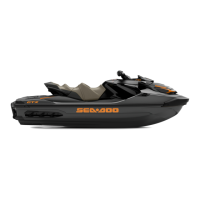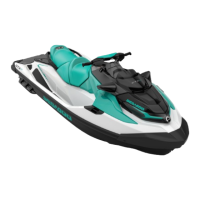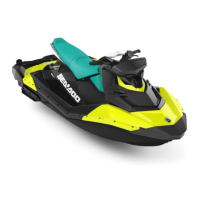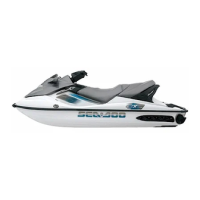Section 08 ENGINE MANAGEMENT (4-TEC)
Subsection 02 (COMPONENT INSPECTION AND ADJUSTMENT)
OIL PRESSURE SENSOR (OPS)
1
R1503motr194A
TYPICAL
1. OPS
Oil Pressure Test
First, carefully check the condition of the connec-
tor terminals. Clean to remove dirt and corrosion
that coud affect proper operation of the sensor.
IMPORTANT: Do not apply dielectric grease on
terminal.
To check the function of the oil pressure sensor,
an oil pressure test has to be performed. Refer to
OIL PRESSURE TEST in LUBRICATION SYSTEM
section.
If the engine oil pressure is out of specifications,
check the points described in TROUBLESHOOT-
ING section.
If the engine oil pressure is good, check the re-
sistance of the OPS while engine is off and while
engine is running.
Resistance Test
Disconnect the connector from the OPS and use
a multimeter to check the resistance between
OPS terminal and engine ground while engine is
stopped (without oil pressure) and while engine
is running (with oil pressure).
When engine is stopped the resistance is infinitely
high (normally open switch).
When engine is running and the oil pressure reach-
es180-220kPa(26-32PSI),theresistanceofthe
OPS is close to 0
.
If resistance values are incorrect, replace OPS.
If the values are correct, check the continuity of
the wiring harness.
Disconnect the ECM connector A from the ECM
and check continuity of circuit 6.
R1503motr195A
6
If wiring harness is good, try a new ECM. Refer
to ECM REPLACEMENT procedures elsewhere in
this section.
Otherwise, repair the connector or replace the
wiring harness between ECM connector and OPS.
OIL SEPARATOR PRESSURE
SENSOR (OSPS)
1
R1503motr189A
1. OSPS
smr2004-Complete Line Up 431
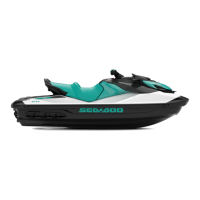
